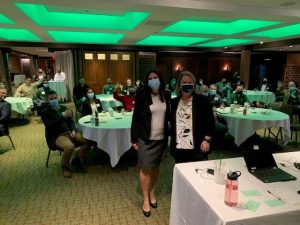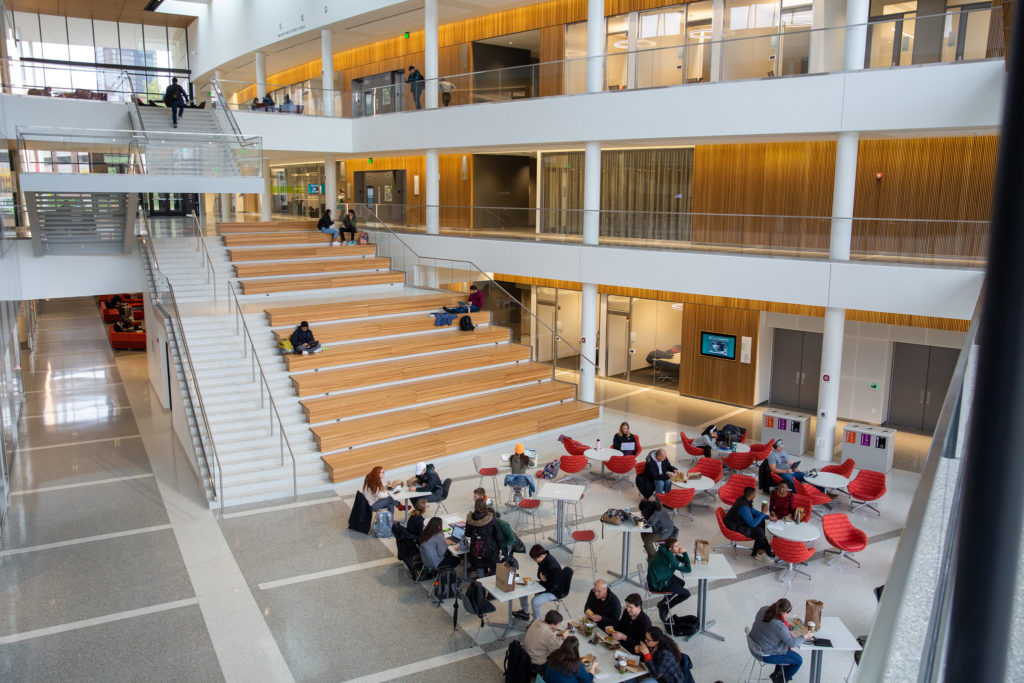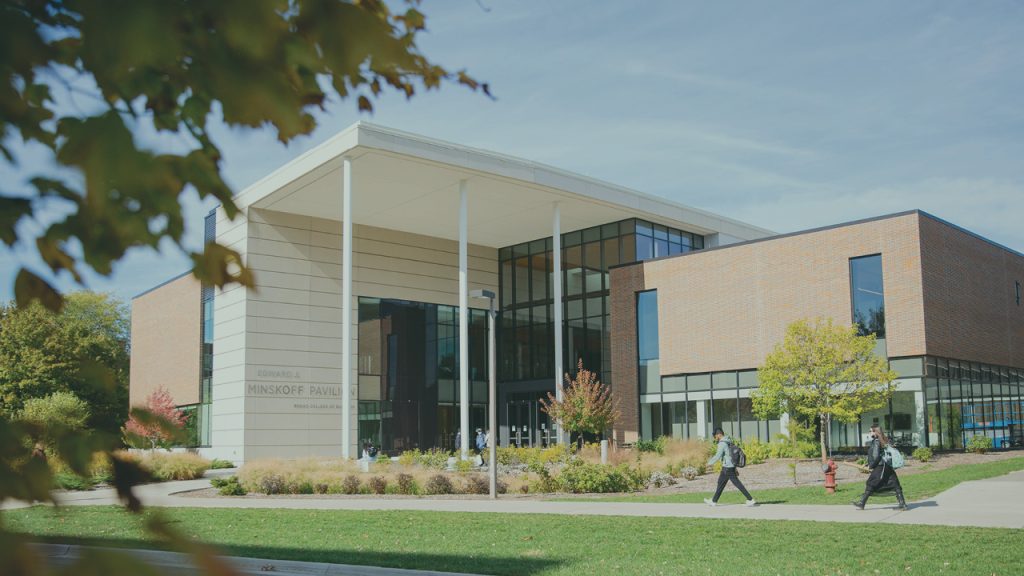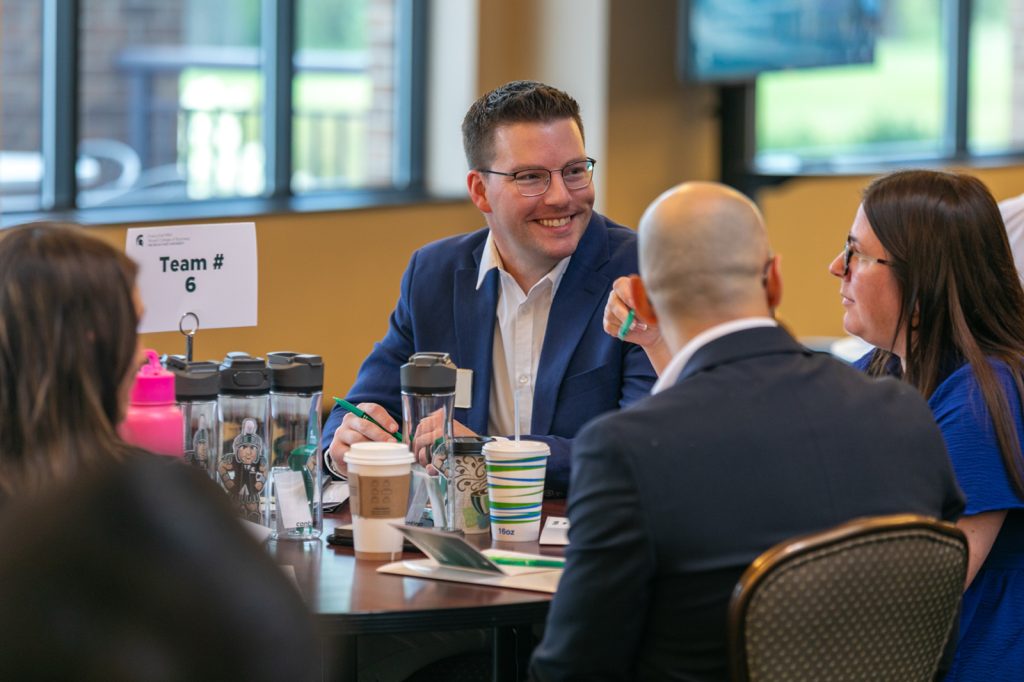Every fall and spring, the Broad Executive MBA Alumni Association hosts a faculty speaker series titled Recharge Your MBA. The association identifies the program’s top faculty to discuss topics with business relevance. The evening also features plenty of networking time to reconnect with classmates. Judy Whipple, Bowersox-Thull Endowed Professor of Logistics and Supply Chain Management, and Mary Schug-Barnhardt (EMBA ’20), director of global planning at Kalsec Inc., a global producer in the food and beverage industry, were asked to present to alumni regarding their take on supply chain disruptions.

Mary Schug-Barnhardt, director of global planning at Kalsec Inc., and Judy Whipple, Bowersox-Thull Endowed Professor of Logistics and Supply Chain Management, at the Recharge Your MBA event
The session started with Whipple defining the idea of risk.
“When we think about risk, it’s really the probability of an unwanted outcome. That could be demand, spikes in demand, drops in demand or challenges with supply,” she said. “An example could be shutdowns from the COVID-19 pandemic or resource scarcities like the winter storms that Texas experienced last year. Typically, when you think about risk and supply chain, we are looking at the likelihood of the risk happening (from low to high) versus the impact. A lot of our mitigation strategies have focused on that high likelihood and low to medium risk.
“We start looking at where we have vulnerabilities,” Whipple continued. “Challenges have occurred because we haven’t looked at that low probability with really high risk. COVID has truly represented one of those black swan events that we really haven’t prepared for. The challenge is how do you convince somebody in advance to invest in significantly more inventory or to have slightly more capacity? We are seeing more and more distributions on the low probability side that affect us on high impact, which create the perfect storm.”
It is not a surprise that ramifications from the pandemic have caused massive changes in supply chains. With greater dispersion of a supply base, there are larger complexities and a lack of visibility. As companies disperse globally, it becomes harder to see a weak link in the supply. The interdependency across weak links has caused many issues.
At the same time, there has been a large demand shift, specifically in e-commerce. This increase in demand of certain consumer products has resulted in more shortages. Challenges with inventory, labor, capacity and congestion in transportation have increased supply chain lead times, which have all driven an increase in prices and inflation.
Schug-Barnhardt said, “Now with the future outlook, what can all of us do to help our companies weather the storm and come out on the other side better? Avoid, absorb and accelerate. With COVID, there was no avoiding it. It hit us all right in the forehead. But how can we do better to absorb the impacts?
“And then what can we do to accelerate, pivot and change what our future looks like?” she continued. “One of the things companies can do is look at your sourcing models. Make sure you have that ability to supply and can be able to pivot. Expand your manufacturing, making yourself more flexible, how you manage your capacity and truly understanding your lead times.”
At Kalsec, Schug-Barnhardt explained that the company looks at business continuity and performs mock events to be prepared for when certain risks occur. It is important for companies to stay change ready and utilize what they have learned from the pandemic for the future.





